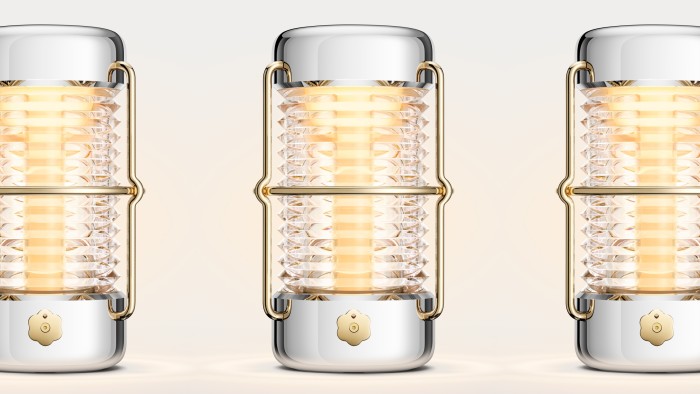Unlock the Editor’s Digest for free
Roula Khalaf, Editor of the FT, selects her favourite stories in this weekly newsletter.
Every ship’s lantern in every antique shop has a story. One rarely told, however, is simply why they look the way they do. These objects were built to withstand the toughest of environments: galvanised steel to protect against the elements and glass fresnel lenses to keep their lights shining brightly. From the protective cages to the swing handles, they’re masterpieces of design – but what might a modern day version look like?
While maritime lighting technology has come a long way, portable lanterns appear to have given way to cheaper and far less hardy alternatives. “I couldn’t find any lantern that I could put on the beach, or one that would be OK in salt air and salt water,” says Sir Jony Ive. A man famed for his creative responses to utilitarian problems could do only one thing: design one.
The result of his labours is the Sailing Lantern ($4,800, balmuda.com), a collaboration between Ive’s LoveFrom collective and the Japanese design firm Balmuda. It’s an extraordinary piece, combining high-end materials – precision-ground glass, machined and polished stainless steel and a weatherproof textured polyester strap – with clever use of LED and rechargeable battery technology. Its appearance evidently has references to maritime lanterns of yesteryear, but Ive stresses that this isn’t a contrivance. “It’s not a mere visual interpretation,” he says. “People have been trying to figure out how to deal with seawater and sea air for hundreds of years, and we were trying to solve the same problems. Those references are present because when I’m thinking about the future, I always end up looking at the past.”
Gen Terao, founder of Balmuda, describes the design as “a gift from Jony’s team”, but admits that the engineering and manufacturing process was a formidable challenge. “I thought a great deal about the glass and how its angles cast a small amount of light from a small lantern over as wide an area as possible,” he says. Ive, meanwhile, notes the hugely corrosive properties of salt: “Most stainless steels will corrode. Only a few are marine grade. But I think that we both really loved how particular and how extreme this functional challenge was.”
Since Balmuda’s inception in 2003, it has gained a reputation for its finesse and attention to detail, producing products (such as its award-winning steam toaster) that aren’t just functional but “shape the atmosphere and feelings that surround you”. That a kinship was found with Ive – whose career has been built upon products that are, in his words, simple to use and beautiful to look at – is unsurprising. Ive immediately had a sense that their collaboration would be fruitful. “What you make describes who you are,” he says, “and in the Balmuda store in Tokyo I was moved by how singular their range of products was, this wonderful clarity and cohesion.” Terao agrees: “We have so much in common, and I’ve learned a lot from Jony’s designs that I apply in my work today.”
“While the Sailing Lantern is designed to withstand maritime environments, it has evidently found a place in Ive’s home, too. “I’m surprised how gently and naturally it can sit in a variety of places – in the garden, on the beach, on a boat,” he says. “Think about diving watches – 99 per cent of the time, they’re not used for diving, and it’s the same here. I love sailing, but I’ve been using the prototypes at home, inside and outside.”
It’s a sumptuous object, and a weighty one – 1.5kg, to be precise. “We knew it would be substantial because the materials are machined, not die cast and plated,” says Ive. “But while its mass is a consequence of the materials we’ve used, what I love about that is that it feels fundamentally and inherently true. It’s a sailing lantern. It’s the real deal.”
Source link









